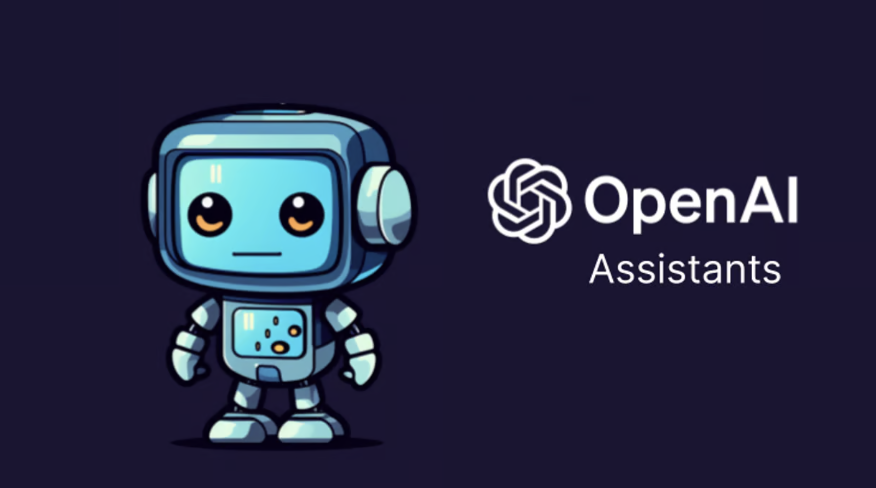Your guide: How to Integrate OpenAI Assistant?
We engage with technology differently now thanks to artificial intelligence. The Assistant of OpenAI delivers strong AI capabilities to many different apps, therefore simplifying and accelerating activities. From the OpenAI Playground to Linux websites, users may now use this technology to improve their digital experiences.
So, if you’ve ever wondered, “How to Integrate OpenAI Assistant?” you’re in luck. Today, we’ll cover this and more.
Also read: BRICS: 3 Major Announcements to Expect at the 2024 Summit


Setup Your OpenAI Account
Users of OpenAI Assistant must first create an OpenAI account and get an API key before beginning use of it. This procedure consists of a few easy steps:
See the OpenAI platform webpage at https://platform.openai.com/apps.
- Click the account option found in the top right corner.
- From the selection menu, choose “View API keys”.
- Select an API option then select “API keys” on the left menu.
- Press “+ Create new secret key” to produce another API key.
- Choose “Create secret key” after suitably naming the key.
Copy the secret key right away since it won’t be visible again.
Users should securely save the API key they acquired. Exporting it as an environment variable at the terminal is one way:
- Export OPENAI_API_ KEY=”your_api_key_here”.
Users of this configuration can utilize OpenAI’s potent models and generate artificial intelligence assistants for their projects.
Generating an OpenAI Assistant
Users of OpenAI Assist must follow the following guidelines to build an assistant:
OpenAI client initialization using API key
- Use the client to produce a specifically defined helper.
- Specify the tools, commands, and assistant’s name.
- Select the suitable assistant’s model.
Here is a sample of building a Math Tutor assistant:
From Open AI import OpenAI
Client = OpenAI()
assistant = client.beta.helpers.createYour instructions, “You are a personal math tutor,” moniker “Math Tutor”. Create and run code using tools {“type”: “code_interpreter}” to respond to arithmetic problems.model=”gpt-4″ ( )
This code sets up the code interpreter tool, instructions, and named assistance. The chosen model affects the assistant’s performance and capacity.
Changing the assistant’s parameters lets users control its behavior. These comprise explicit directions for managing chores and temperature settings for predictable reactions.
Also read: BRICS: United States Admits Sanctions Are Crushing The Dollar
Including the Assistant in your application
Developers follow a certain flow to include OpenAI Assistant in an application. They begin with designing an Assistant with selected models and customized instructions. The next action is starting a Thread when a user strikes up a chat. The development adds Messages to the Thread when users pose questions. They then run the Assistant on the Thread to provide replies.


Beta HTTP headers have to be included in developers’ API calls. Officially Python or Node.js SDKs from OpenAI handle this header automatically. The header reads like this:
OpenAI-Beta: v2 associates=v2
This is a basic Python Assistant creation example:
From Openai import OpenAI
client = OpenAI() assistant = client.beta.assistants.develop(name=”Math Tutor”) You are a personal math tutor. Create and run code using tools {“type”: “code_interpreter}” to respond to arithmetic problems.model=”gpt-4″
To start a Thread and include a Message:
client.beta.threads.create() creates threads.
Thread_id=thread.id, role=”user,” content=”I need to solve the equation {3x + 11 = 14}. Could you help me?”
To acquire the Assistant’s reply, developers can then design and stream a Run. Defining an EventHandler class to handle response events and leveraging the stream SDK helper forms part of this approach.


Conclusion: How to Integrate OpenAI Assistant
In conclusion, the OpenAI Assistant brings artificial intelligence capabilities to numerous applications. This helps simplify and accelerate activities. Users can enhance their digital experiences. From opening an OpenAI account to involving the assistant with initiatives, the process flows easily. Our encounters with artificial intelligence-powered devices vary based on this technology.
OpenAI Assistant lets you develop unique AI assistants for different tasks. These assistants can be customized for programming interpretation and math training. Integration involves constructing threads and sending messages to the assistant for responses. This technology lets developers create more complex and engaging programs.





